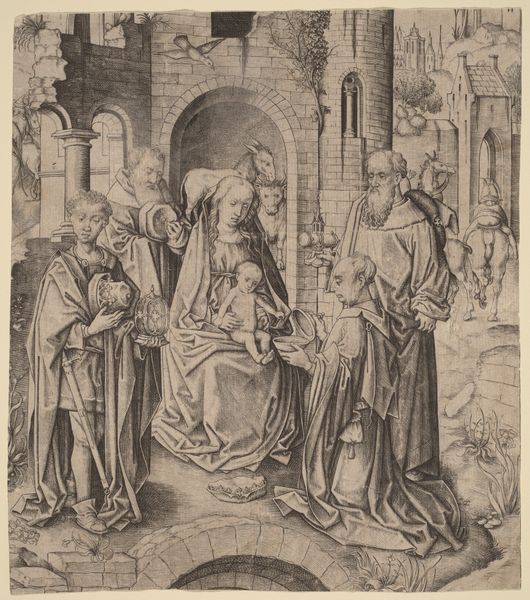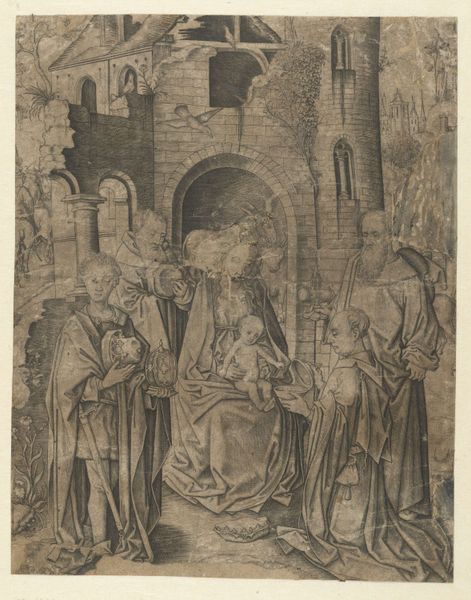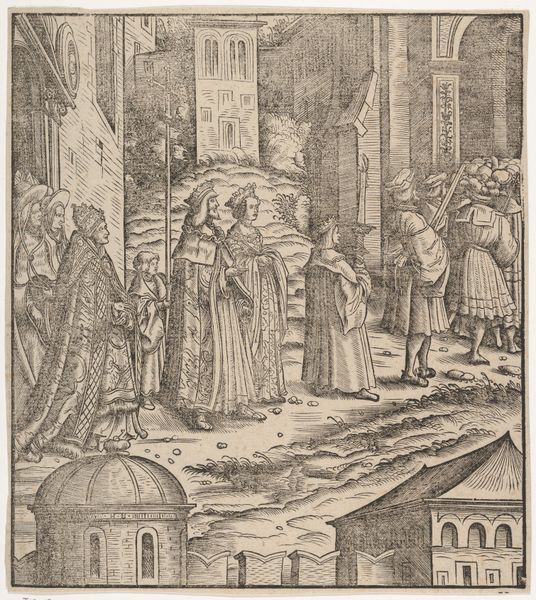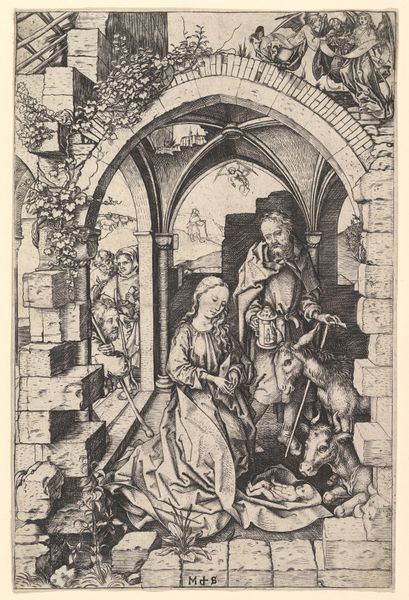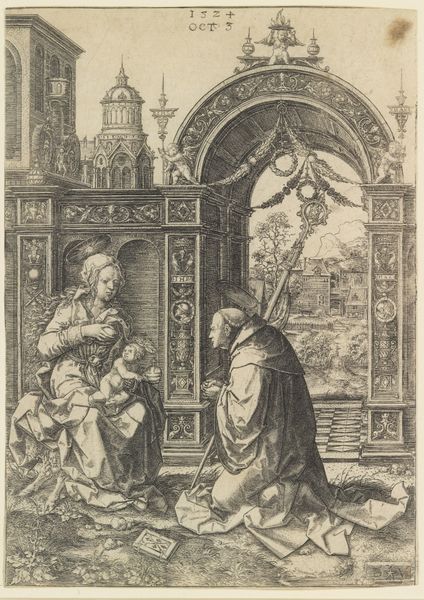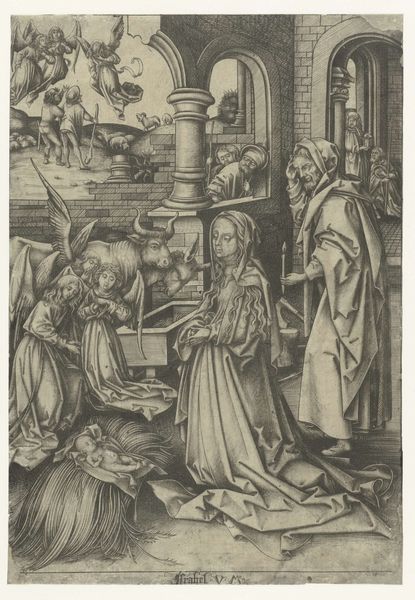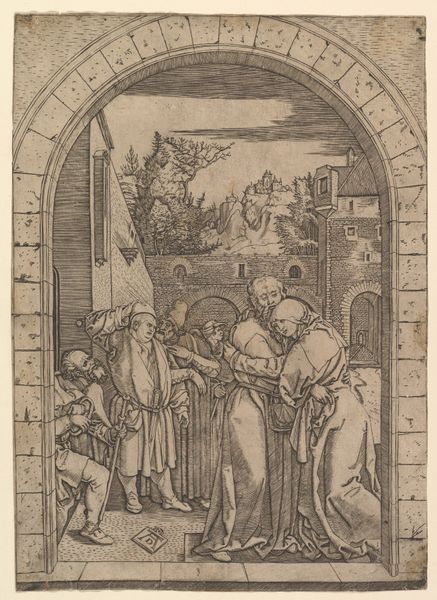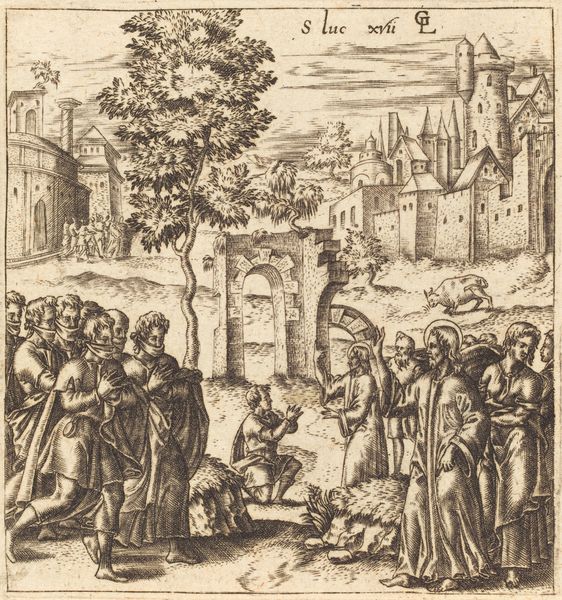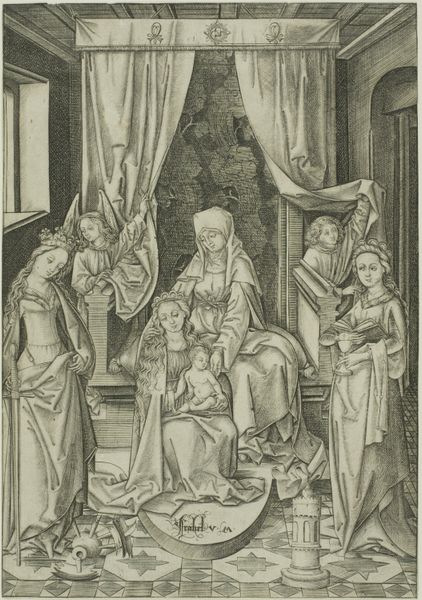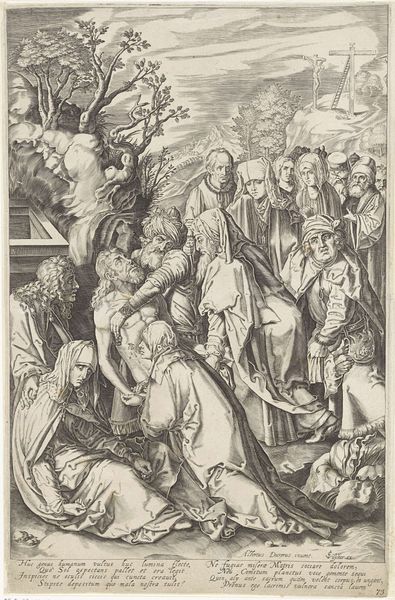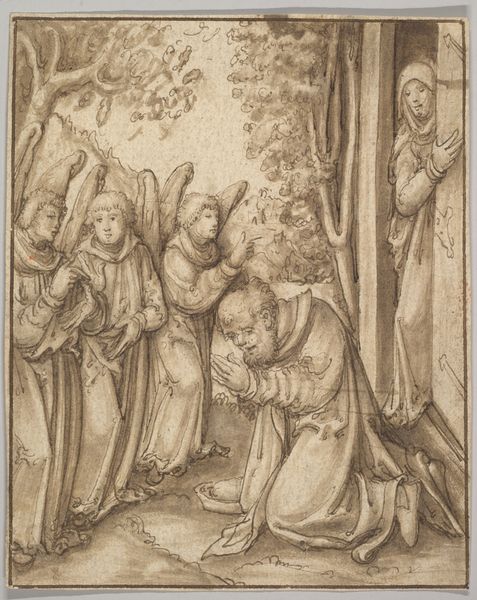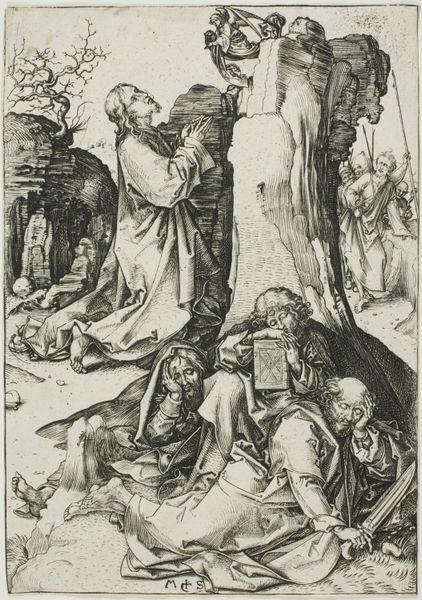
drawing, print, engraving
#
portrait
#
drawing
#
medieval
#
narrative-art
# print
#
figuration
#
line
#
history-painting
#
italian-renaissance
#
engraving
Copyright: Public Domain
Curator: Welcome. Today, we’re looking at "Adoration of the Magi", an engraving by Master IAM of Zwolle, created sometime between 1465 and 1495. Editor: My first impression is one of profound quietude despite the grand subject. The grayscale tones and precise linework lend a delicate air, almost as if the artist captured a whispered moment. Curator: The artist skillfully employs line to model form and define space. Notice the textures created, from the rough stones to the soft folds of fabric, purely through variations in line density and direction. But consider the symbolism too, with the ruins signifying the fading Old Covenant and the new Christian era dawning. Editor: Exactly! The visual contrasts strike me profoundly: old versus new, fragility versus solidity. I find the dilapidated structure surprisingly central to the composition, almost competing with the figures for our attention. Curator: The architecture carries potent meaning. The decaying building behind the Holy Family is loaded with symbolism—it's an explicit reference to the crumbling pre-Christian world giving way to a new spiritual order. The Magi, representing diverse corners of the known world, all converging before Christ underscores the universal scope of salvation. Editor: True, but aesthetically, the crumbling edifice establishes such powerful visual rhythms with its arches, juxtaposed against the relative angularity of the human figures. There is a certain tension between its physical decay and Mary's stoic poise at the center. Curator: Absolutely, and this contrast reinforces the idea of enduring faith rising from temporal ruins. The magi bring not only gifts, but cultural memory. This adoration scene became a prominent symbol of hope during times of great religious and political upheaval, which is especially resonant considering the rise of printmaking at the time—allowing imagery like this to spread readily. Editor: Yes, looking closely I can see the formal echoes in the folds of fabric mimicked within the architectural ruins above—creating a cohesive, repeating visual grammar. That link really unifies the image. Curator: This artwork serves as a compelling reminder of how art encapsulates pivotal shifts in collective memory and faith. Editor: It reveals how lines, contrasts, and composition serve more than representation, weaving narrative and potent meaning together.
Comments
No comments
Be the first to comment and join the conversation on the ultimate creative platform.
